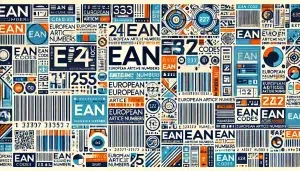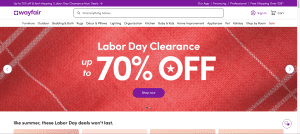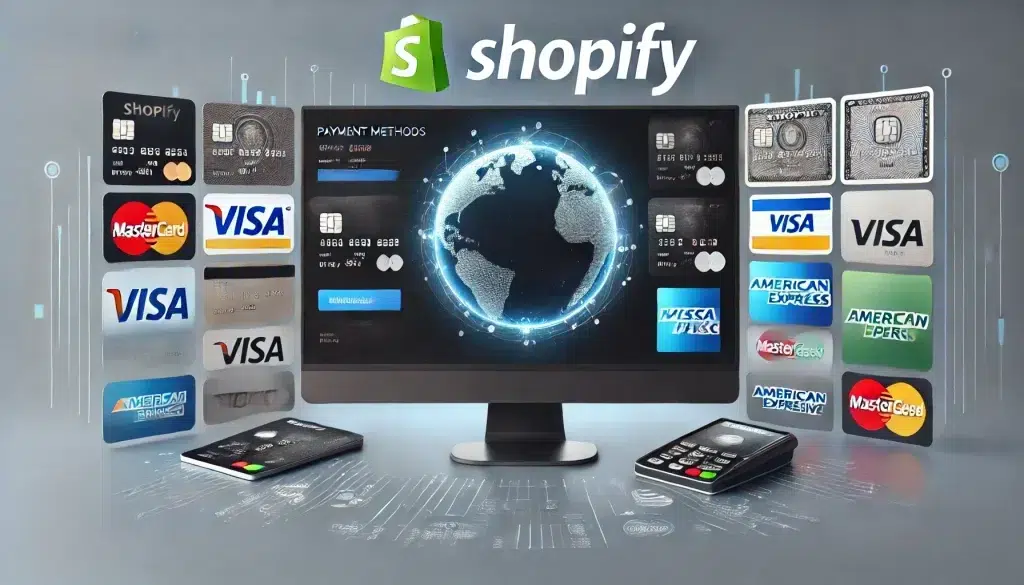
Shopify payment methods are vital to running a successful online business. According to a 2022 survey by Baymard Institute, 17% of online shoppers abandon their carts due to a complicated checkout process.
Shopify, a leading e-commerce platform, reported over 1.75 million merchants in 2021, underscoring its popularity among online retailers.
With its diverse payment options, Shopify aims to streamline the checkout process, enhancing the shopping experience for both sellers and buyers.
Choosing the right payment method can significantly impact conversion rates and customer satisfaction.
In 2021, digital payments accounted for 25.7% of global retail sales, and this number continues to grow as more consumers prefer online shopping. Shopify caters to this trend by offering various payment gateways, including Shopify Payments, Apple Pay, Google Pay, and traditional credit card payments.
With the global e-commerce market projected to reach $6.4 trillion by 2024, ensuring a smooth and secure payment process is more important than ever.
A study by Statista revealed that the global online payment fraud loss is expected to exceed $41 billion by 2027, highlighting the necessity of secure payment gateways.
This guide will explore the best payment methods available on Shopify, highlighting their features, benefits, and setup processes.
Whether you’re new to Shopify or looking to optimize your payment options, this comprehensive guide will help you make informed decisions. Let’s dive into the world of Shopify payments!
Why Choosing the Right Shopify Payment Method Matters
Selecting the appropriate payment method for your Shopify store is crucial for several reasons. Not only does it directly influence your conversion rates, but it also plays a significant role in customer satisfaction. Here’s a more detailed look at why choosing the right payment method matters:
1. Impact on Conversion Rates
A smooth and hassle-free payment process can drastically reduce cart abandonment rates. According to the Baymard Institute, 17% of shoppers abandon their carts due to a complicated checkout process. You can significantly lower this percentage by offering a streamlined payment method that customers find easy to use, leading to higher conversion rates and increased sales.
2. Enhance the Customer Experience
Customer experience is paramount in e-commerce. A seamless payment process contributes to a positive shopping experience, encouraging repeat business. When customers encounter a quick and easy-to-navigate payment system, they are more likely to complete their purchases and return for future transactions. Conversely, a complicated or untrustworthy payment process can deter customers, potentially driving them to your competitors.
3. Build Customer Trust
Security is a top concern for online shoppers. A secure payment gateway builds trust, as customers need assurance that their personal and financial information is protected. Shopify Payments, for instance, is certified at Level 1 PCI DSS, which guarantees a high level of security for credit card transactions. By choosing a payment method known for its security features, you can reassure customers, making them more likely to purchase from your store.
4. Offer Payment Flexibility
Different customers prefer different payment methods. Some might prefer using credit cards, while others may opt for digital wallets like Apple Pay or Google Pay. Offering multiple payment options caters to these diverse preferences, making it more convenient for customers to shop with you. This flexibility can enhance customer satisfaction and broaden your customer base.
5. Reduce Transaction Fees
Different payment gateways come with varying fee structures. Choosing a payment method with lower transaction fees can reduce operational costs, leading to higher profit margins. Shopify Payments, for example, has competitive transaction fees, which can be more cost-effective than third-party payment providers.
6. Ensure Compliance and Avoid Chargebacks
A reliable payment method can help you stay compliant with various financial regulations, reducing the risk of legal issues. Additionally, secure payment gateways can minimize the incidence of fraudulent transactions and chargebacks, protecting your revenue and reputation.
7. Streamline Operations
Integrating a well-known payment method with your Shopify store can streamline your operations. Features like automatic payouts, easy refunds, and consolidated reporting help manage your financial activities more efficiently. This efficiency can save you time and resources, allowing you to focus on growing your business.
The Shopify Payment Methods You Can Choose From
Shopify offers a variety of payment methods to cater to different business needs and customer preferences. These options ensure that shoppers can have a flexible, secure, and efficient checkout experience.
The Shopify In-House Solution
Shopify Payments, launched in 2013 in collaboration with Stripe, is Shopify’s payment gateway. It allows merchants to process payments directly in their stores without relying on third-party providers. This complete integration with the Shopify ecosystem makes it a convenient option for many sellers.
Pros of Shopify Payments
- Simplified Checkout Process: Customers can complete purchases without being redirected to external sites.
- Easy Setup and Management: No complex coding skills are required. Merchants can manage orders, shipping, inventory, and refunds from a single dashboard.
- Enhanced Security: Certified at Level 1 PCI DSS, Shopify Payments ensures secure credit card transactions and protects against fraud.
Cons of Shopify Payments
- Transaction Fees: Shopify Payments charges a transaction fee for every sale, which ranges from 2.4% to 2.9% + $0.30 per transaction.
- Geographic Limitations: Shopify Payments is not available in all countries, which can be a drawback for international sellers.
- Account Holds: Merchants have experienced Account holds or fund reserves, which have impacted cash flow.
PayPal
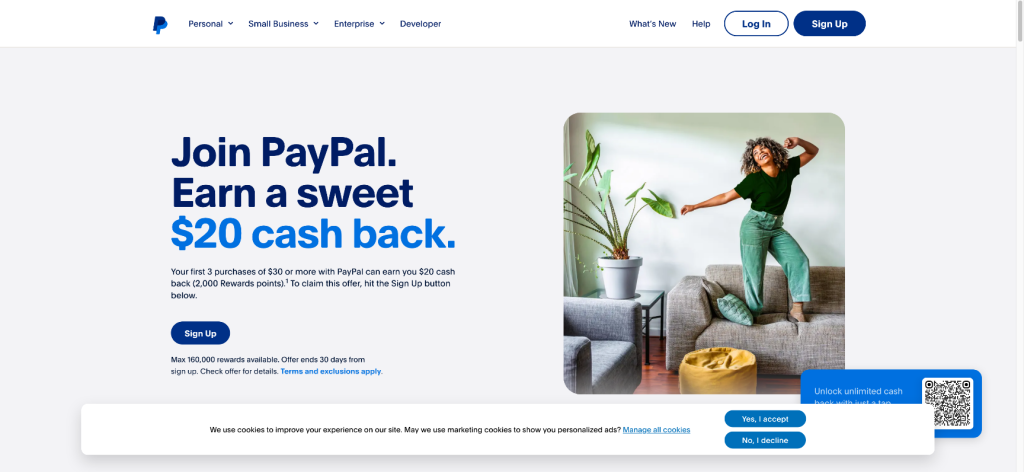
PayPal is a widely recognized and trusted payment method. It offers a fast setup and is integrated with Shopify. PayPal allows various payment options, including credit cards, debit cards, and PayPal accounts.
Pros of PayPal
- Wide Recognition and Trust: Known globally, which can increase customer trust and conversion rates.
- Multiple Payment Options: Supports credit cards, debit cards, and PayPal accounts.
- Easy Integration: Fast and straightforward setup with Shopify.
Cons of PayPal
- Transaction Fees: PayPal charges transaction fees, which can be higher for international payments.
- Possible Account Holds: Some merchants report having their funds held for extended periods.
- Complex Dispute Resolution: Handling disputes and chargebacks can be more cumbersome than other gateways.
Stripe
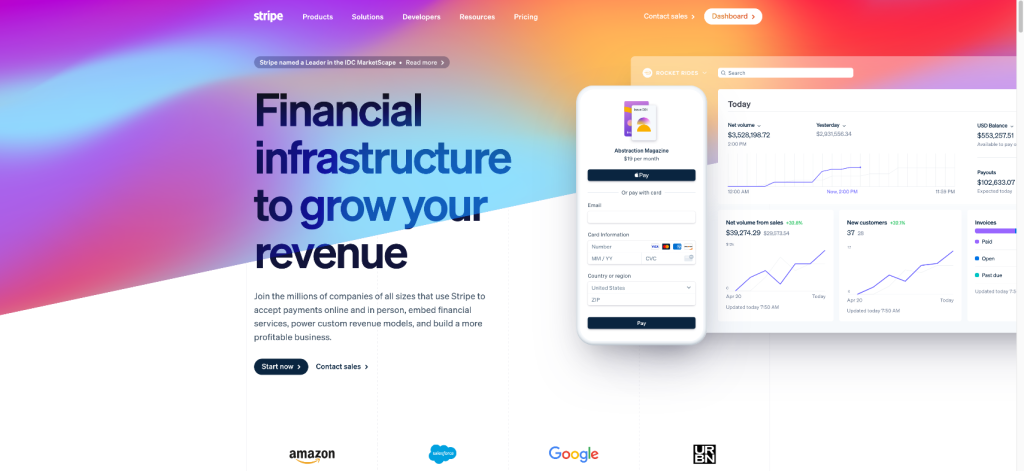
Stripe is another robust payment gateway that is compatible with Shopify. It supports various payment methods and currencies, making it ideal for international sellers.
Pros of Stripe
- International Support: It accepts various payment methods and currencies and is ideal for global businesses.
- Developer-Friendly: Offers extensive customization options for developers.
- Transparent Pricing: Clear fee structure without hidden charges.
Cons of Stripe
- Complex Setup: Can be challenging for non-technical users to set up and customize.
- Higher Fees for Some Transactions: International and currency conversion fees can increase.
- Limited Customer Support: Some users report slow response times from customer support.
Square
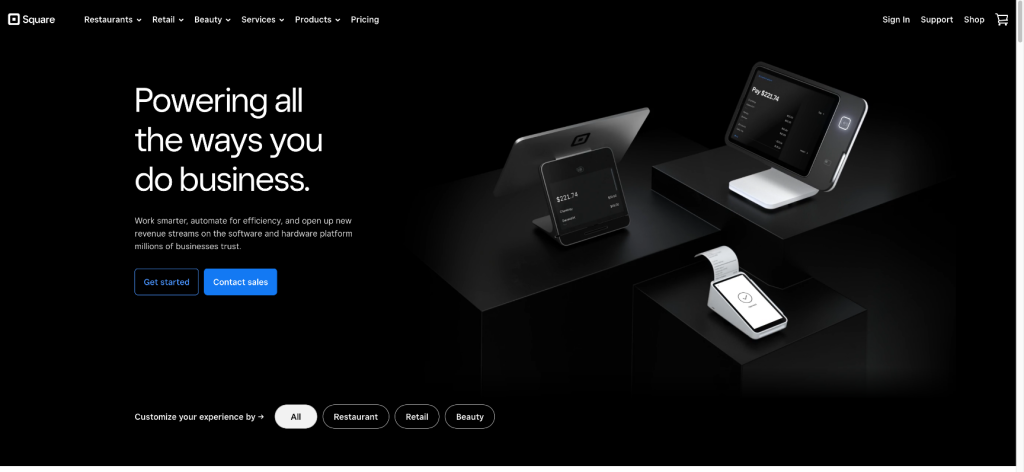
Square provides a straightforward setup process and integrates well with Shopify. It is known for its transparent fee structure and ease of use.
Pros of Square
- Transparent Fee Structure: Clear and predictable fees without hidden costs.
- Ease of Use: Simple setup and user-friendly interface.
- In-Person Payments: Ideal for businesses that also operate physical stores.
Cons of Square
- Limited International Support: Primarily available in the US, Canada, Australia, Japan, and the UK.
- Account Stability Issues: Some users experience sudden Account holds or terminations.
- Basic Features: Lacks advanced features compared to other payment gateways.
Klarna

Klarna offers flexible payment solutions, such as buy now and pay later, which can increase conversion rates by providing customers with more payment options.
Pros of Klarna
- Flexible Payment Options: Offers installment plans and buy now, pay later options.
- Increased Conversion Rates: Flexible payment methods can attract more customers.
- User-Friendly: Easy for customers to use and understand.
Cons of Klarna
- Higher Merchant Fees: Costs for using Klarna can be higher than those of other gateways.
- Complex Integration: May require more technical expertise to set up.
- Regional Limitations: Not available in all countries, limiting its use for some merchants.
Amazon Pay
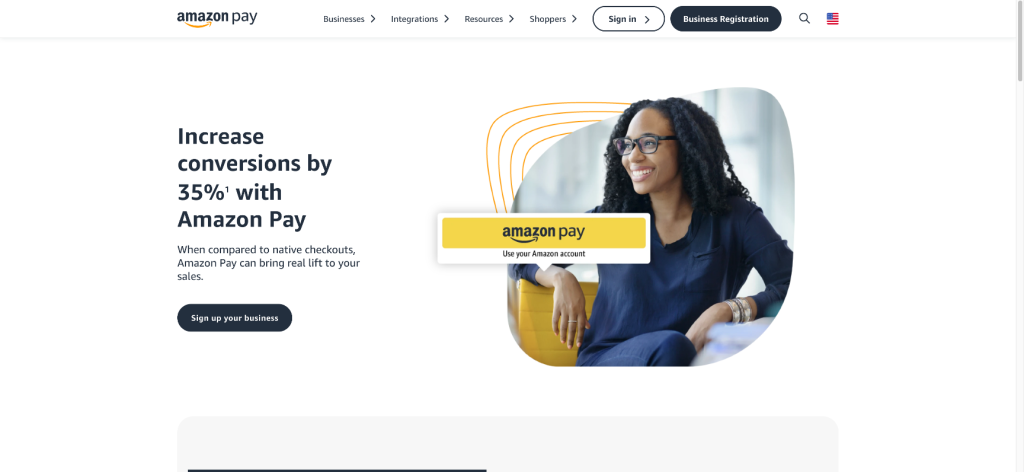
Amazon Pay allows customers to use their Amazon account to make purchases on your Shopify store. This method can streamline the checkout process for millions of Amazon users.
Pros of Amazon Pay
- Trusted Brand: Leverages Amazon’s trusted reputation to increase customer confidence.
- Streamlined Checkout: Simplifies the payment process for Amazon account holders.
- Security: Backed by Amazon’s robust security infrastructure.
Cons of Amazon Pay
- Transaction Fees: Like other payment gateways, Amazon Pay charges fees per transaction.
- Limited Customization: Fewer customization options compared to other payment gateways.
- Geographic Restrictions: Not available in all countries, which can limit its use for international sellers.
How to Optimize Shopify Payment Methods for Success
Optimizing your Shopify payment methods can significantly boost your store’s performance and customer satisfaction.
Focus on Pricing Strategy
A well-thought-out pricing strategy is crucial for maximizing profits and customer satisfaction. According to a survey by Retail Dive, 87% of shoppers say price is the most critical factor influencing their purchase decisions.
To remain competitive, consider using dynamic pricing tools like those offered by Pricefy. These tools allow you to monitor your competitors’ prices and adjust your own in real time, ensuring you offer the best prices without sacrificing profitability.
Additionally, regularly reviewing and updating your pricing strategy based on market trends and consumer behavior can help you stay ahead in the e-commerce landscape.
Streamline the Checkout Process
Ensuring a smooth checkout process is essential for reducing cart abandonment rates, which can be as high as 69.57%, according to the Baymard Institute. Here are some detailed steps to streamline your checkout process:
1. Simplify Payment Steps
Reduce the number of steps required to complete a purchase. Consider implementing a one-page checkout process to minimize friction.
2. Multiple Payment Options
Offer a variety of payment methods, including credit/debit cards, digital wallets (like Apple Pay and Google Pay), and alternative payment methods (such as Klarna and PayPal). This flexibility caters to different customer preferences and increases the likelihood of completing sales.
3. Mobile Optimization
Ensure your checkout process is optimized for mobile devices. A significant portion of online shopping is done on smartphones and tablets. A responsive design and mobile-friendly payment gateways can enhance the user experience.
4. Guest Checkout
Allow customers to check out as guests without creating an account. This will reduce barriers to purchase and speed up the process.
5. Autofill and Saved information
Use autofill options for forms, allowing customers to save their payment information for future purchases. This can speed up the checkout process and improve the user experience.
6. Security and Trust Signals
Display security badges and trust signals prominently during the checkout process. Ensure your payment gateway is PCI DSS compliant and provides robust fraud protection measures.
7. Transparent Costs
Display all costs early in the checkout process, including shipping and taxes. Unexpected expenses can lead to cart abandonment.
FAQs
How do I set up multiple payment methods on my Shopify store?
To set up multiple payment methods on your Shopify store, navigate to the “Settings” tab and select “Payment providers.” From there, you can add and configure different payment options such as credit cards, PayPal, and alternative payment methods.
Are there any transaction fees associated with Shopify payment methods?
Yes, some payment methods may have transaction fees associated with each transaction. It’s essential to review the fees and charges for each payment method before integrating it into your Shopify store to ensure transparency for both you and your customers.
Can I offer discounts for specific payment methods on Shopify?
Yes, Shopify allows you to set up discount codes and promotions for specific payment methods. By offering discounts for preferred payment options, you can incentivize customers to choose a particular payment method and increase conversions on your store.
How can I ensure the security of Shopify payment methods?
Shopify prioritizes security and compliance to protect both merchants and customers from fraudulent activities. By using reputable payment gateways and following best practices for online security, you can ensure the safety of transactions on your Shopify store.
Are there any restrictions on which Shopify payment methods I can use?
Shopify offers a wide range of payment methods that are compatible with its platform. However, certain payment methods may have specific requirements or restrictions based on your location, target market, or business type. It’s essential to review the terms and conditions of each payment method before integrating it into your Shopify store.
Wrapping Up
Choosing the right payment methods for your Shopify store can significantly impact your business’s success. Shopify Payments offers a seamless, integrated solution with multiple benefits, while alternatives like PayPal, Stripe, Square, Klarna, and Amazon Pay provide flexibility and additional features.
Optimizing your payment and pricing strategies can enhance the shopping experience, reduce cart abandonment, and increase sales.


